We're an affiliate
We hope you love the products we recommend! Just so you know, we may collect a share of sales or other compensation from the links on this page at no additional cost to you. Thank you if you use our links, we really appreciate it!
The Rottweiler dog breed can be a good family companion when nurtured well and provided with opportunities to play.
Rottweilers are well known for their sheer strength, stamina, and inherent protective nature which can make them a challenging breed if they are not well looked after.
But in the right hands, the Rottweilers can be the best guard dog in town, and simultaneously become an affectionate four-legged friend to the entire family.
Are you wondering if the Rottweiler dog breed is a good option for you and your family?
Keep reading our comprehensive guide to find all the answers you’re looking for about getting, parenting, training, and living with this large-breed dog.
What Is a Rottweiler? A Brief History of The Rottweiler Dogs
Rottweiler dog breeds, as we know them today, are believed to have descended from the ancient Roman droving and herding dog. Drover dogs were used to drive cattle to the marketplaces.
The name ‘Rottweiler’ came from a small German town known as ‘Rotweil’ which was set up by the Romans around 73 – 74 AD.
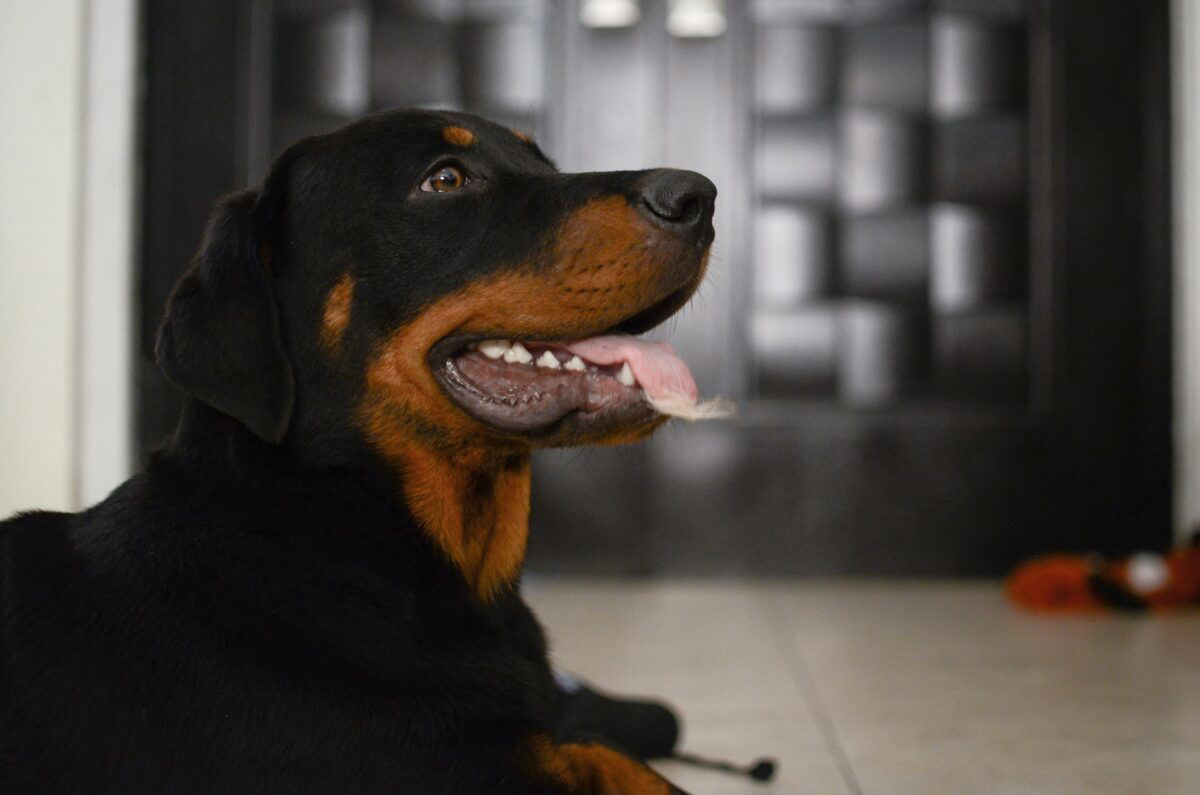
The ancient Rottweiler dogs were referred to as the “Butcher’s Dogs” during the mid-1800s because of their role in handling cattle and livestock.
These muscular canines were entrusted with herding cattle to market and guarding both the livestock and the valuable earnings of butchers tied around their necks.
Their robust physique, keen intelligence, and protective instincts made them indispensable for these popular tasks.
The Rottweiler’s loyalty and work ethic were highly valued by the butchers, and they became a common sight in the bustling marketplaces of Southern Germany.
With time, Rottweilers became popular in the region and they were being used for almost everything ranging from pulling carts, safeguarding homes, and herding cattle.
During the rapid industrial revolution in Europe, the newly built trains became the favorable means of transporting cattle and this saw a massive decline in the demand for Rottweilers.
On 13th January 1914, the Rottweiler club in Germany ‘The Deutscher Rottweiler-Klub (DRK)’ was formed.
One year later, a second breed club known as ‘Süddeutscher Rottweiler-Klub (SDRK)’ was established.
These two clubs had different goals and motives, however in 1921, they merged to form the ‘Allgemeiner Deutscher Rottweiler Klub (ADRK)’ known today as the official international Rottweiler club.
The American Kennel Club registered their first Rottweiler dogs in 1931.
The popularity of this lovely breed spiked after their American recognition and they were ranked as the 9th most popular dog in 2013.
5 Fascinating Facts About Rottweilers
1. Rottweilers nearly became extinct
The rapid industrialization and development in Europe during the mid-1800s nearly sent the Rottweilers into extinction.
In addition to dog carts being slowly replaced with donkey carts, the construction of rails and paved roads left Rotties with no job to do.
Luckily enough, Rottweiler enthusiasts worked around the clock to keep this breed and by the 1900s, they bounced back as military dogs and police dogs.
2. A Rottweiler therapy dog won an award for Canine Excellence
Renice Zimmerman’s therapy dog – named Wynd, a rottweiler, won the AKC’s award for canine excellence in 2015 under the Therapy Dog category.
Wynd was deployed as a service dog and therapy dog for surviving military family members and she was also a regular worker at the Hampton Veterans Hospital, assisting patients suffering PTSD.
Unfortunately, Wynd passed on in December 2015 after a tough battle with a bone cancer known as osteosarcoma.
3. Rottweilers were known as Butchers’ dogs
During the mid-1800s in Germany, Rottweilers were known as ‘Rottweiler metzgerhund’ which translates to Rottweiler Butcher dogs.
These dogs were nicknamed so because of their role in protecting cattle, pulling livestock to marketplaces, and guarding the butchers’ money.
4. Rottweilers were named after the German town of Rottweil
The ancient Roman legion alongside their droving dogs camped along the Neckar River in southern Germany and established a town known as ‘Rottweil’ around 73 AD.
This region was famed for herding cattle and keeping livestock with the help of droving dogs who were selectively transformed into the Rottweilers.
5. Rottweilers love to work
Rottweilers are thrilled when given a job to do. These dogs can be trained as service dogs, guard dogs, police dogs, custom inspectors, hauling dogs, and many more roles.
Rotties have impressive mental acumen and they also have an inherent protective nature which makes them a good choice for defensive work.
Because of their strong desire to work, Rottweilers need regular physical and mental stimulation to keep them in top condition.
Rottweiler Puppies
You can acquire a Rottweiler puppy using two popular means, that is adopting or purchasing from a reputable breeder.
Both options have their advantages and disadvantages, so you should do your homework to find out what you need in a pet and what can work for you.
Whichever source you choose, bringing a new Rottweiler puppy into your household is a worthwhile experience that comes with a fair share of dog-parenting responsibilities.

First of all, we recommend you puppy-proof your home to make it accommodative to the new canine buddy.
Invest in high-quality dog accessories such as cozy beds, blankets, food bowls, and interactive toys.
With the right care, these energetic pups can grow to become loyal to their human family and protective of both home and property.
The Three Types of Rottweiler Dog Breed (with Pictures)
1. German Rottweilers
The German Rottweilers are considered by many people as the closest relatives to the original Rottweiler dogs bred in Southern Germany.
German Rotties are carefully bred with strict adherence to the ancient Rottweiler standards set by their international breed club.
They have thicker bones, bigger bodies, and stockier heads than their American counterparts. German Rotties have broad triangular eyes that come close to those of their cousins in the US.
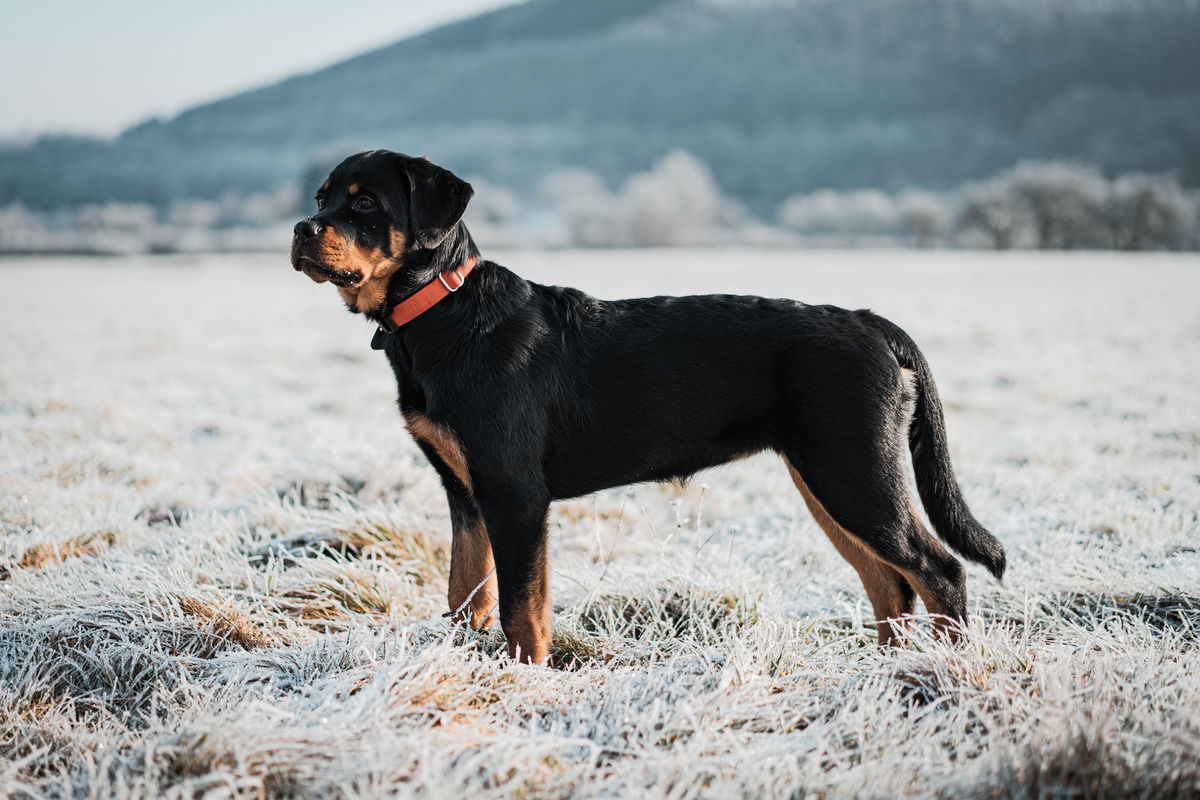
These Rottweilers are highly priced for their unwavering loyalty and commitment to their human caregivers.
They have an impressive mental sharpness and eagerness to serve which makes them ideal candidates for police and military work.
German Rotties are strong canines that need lots of exercise and training to help them mold good behavior, but they can still be protective of their closest pack.
2. American Rottweilers
The American Rottweiler is a strong medium-sized dog with a noticeable muscular build which helps them perform tough work. They are often black with clear rust markings all over the coat.
Male American Rottweilers are considerably larger than their female counterparts although the latter also have a relatively huge muscular build.
The American Rottweilers can make good guard dogs thanks to their loyalty and natural protective instincts.
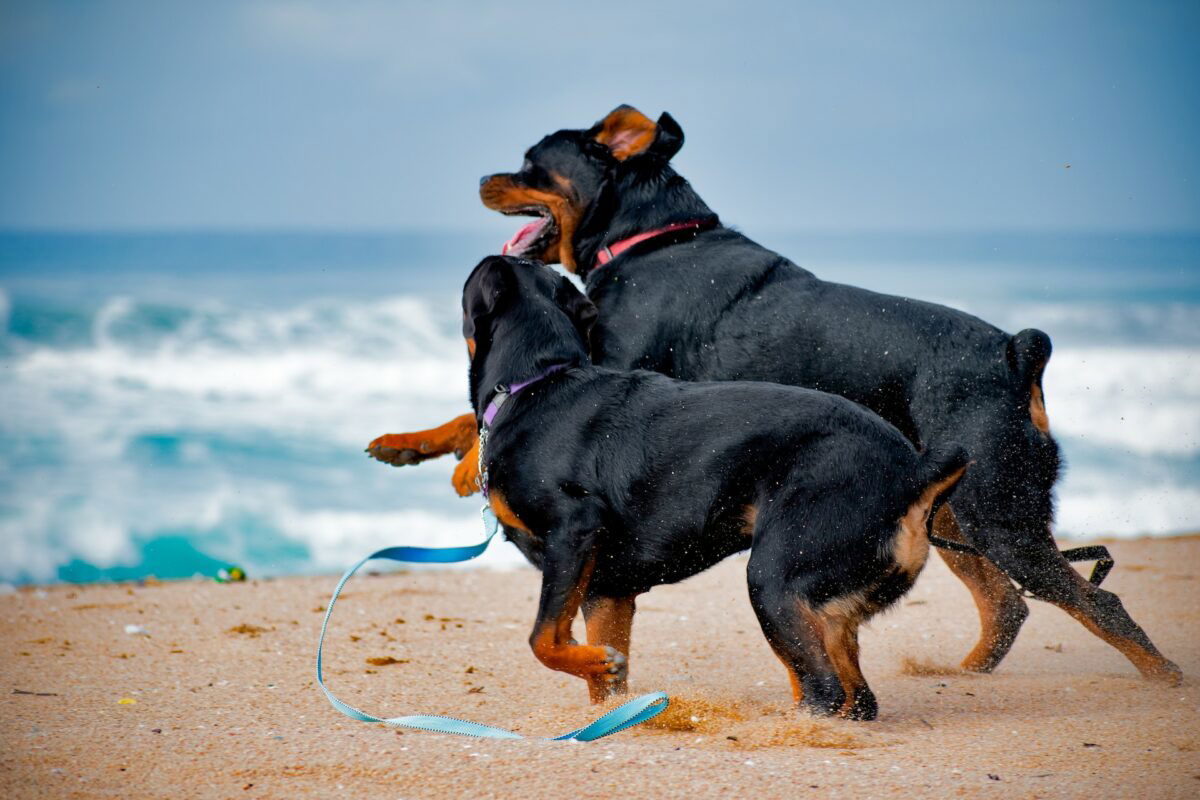
These Rottweilers have wrongly been labeled as being naturally aggressive, but that’s not true because they rarely walk around picking fights with strangers.
In the households, the American Rottweiler is affectionate and loves to play. These loyal dogs can be fun-loving and they love to hang out with every family member.
3. Roman Rottweilers
The Roman Rottweilers, also known as Gladiator Rottweilers or King Rottweilers, are not officially recognized by the AKC and the ADRK.
Unfortunately, the Roman Rottweilers are a case of bad breeding and they can grow extremely big to attain the size of a giant breed dog – making them susceptible to orthopedic issues.
In most cases, the Roman Rottweilers will typically come in either black and mahogany markings or solid black and tan markings coat color.
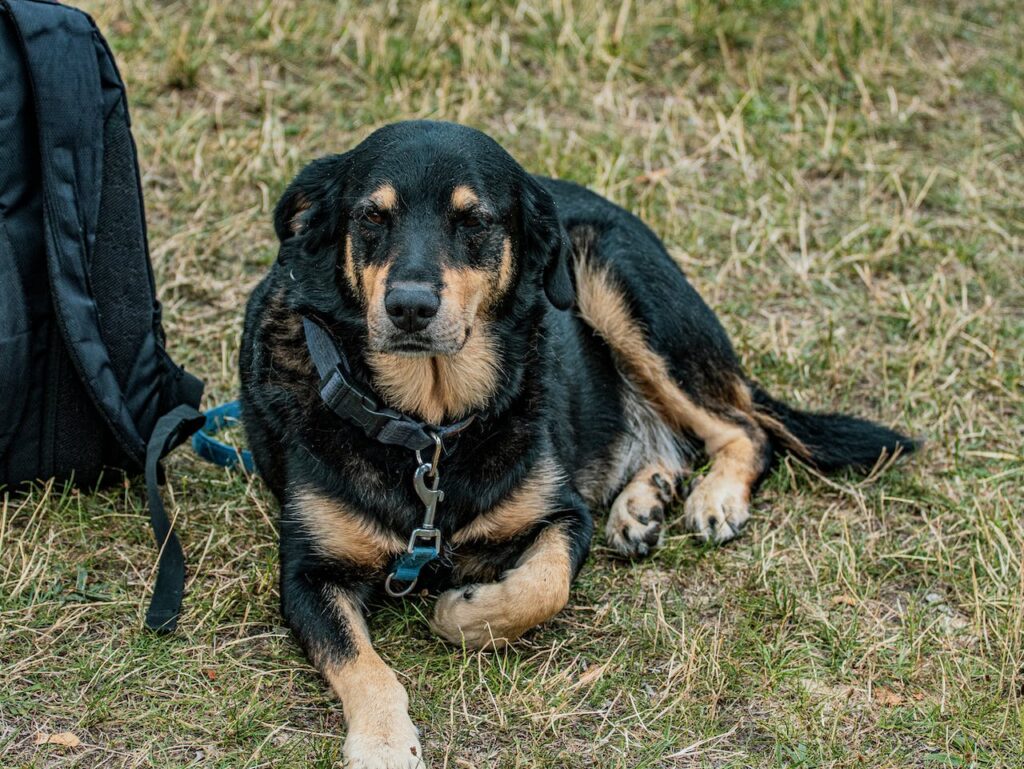
These canines are strong, and brawny, and might appear threatening depending on their posture. Roman Rotties have a broad and stocky head, including both jaws.
Contrary to what some people believe, the Roman Rotties can be affectionate and loving to their human caregivers when well-raised.
Rottweiler Physical Characteristics
Size and weight range
Rottweilers are medium to large-sized dogs with a stocky body build and muscular frame. Female Rotties have a more feminine look and are less muscular than their male counterparts.
A fully grown adult male Rottweiler has a shoulder height of between 24 to 27 inches, while the females’ height ranges between 22 to 25 inches.
In terms of weight, a healthy and mature male Rottweiler can tip the scale between 95 to 130 pounds while a healthy female weighs between 85 to 115 pounds.
Coat color and texture
Rottweilers have a short and dense double coat which consists of a weather-resistant undercoat and finely wired topcoat with medium-length fur.
Their coat color is primarily black with clearly defined markings of mahogany and tan on specific areas of the body such as the legs, paws, chest, muzzle, and neck.
Distinctive features
Rottweiler dog breeds have a set of distinctive features that set them apart from other dog breeds. These agile and strong canines have a strong jawline with an extensive skull and large muzzle.
Most Rottweilers in America have their tails removed or ‘docked’, although this practice is becoming less common in some states and it’s illegal in other countries including Germany.
Tail docking in Rottweilers is seen as a breed standard and it’s usually done for cosmetic purposes only although some people claim it increases the strength and stamina of the Rotties.
Rottweiler Temperament and Personality
An ideal and well-brought-up Rottweiler is calm, composed, brave, and never shy of many activities.
These agile dogs can build affection with family members and even follow their favorite caregivers.
It’s highly likely you have seen images or videos of angry Rottweilers, which made you wonder if these dogs are good with kids.
To answer your worries, Rottweilers are good with children both small and big, but they can be powerful to small children who provoke them into anger.
This makes it necessary for you to teach your kids how to interact with dogs to ensure a harmonious living with no frequent scuffles.
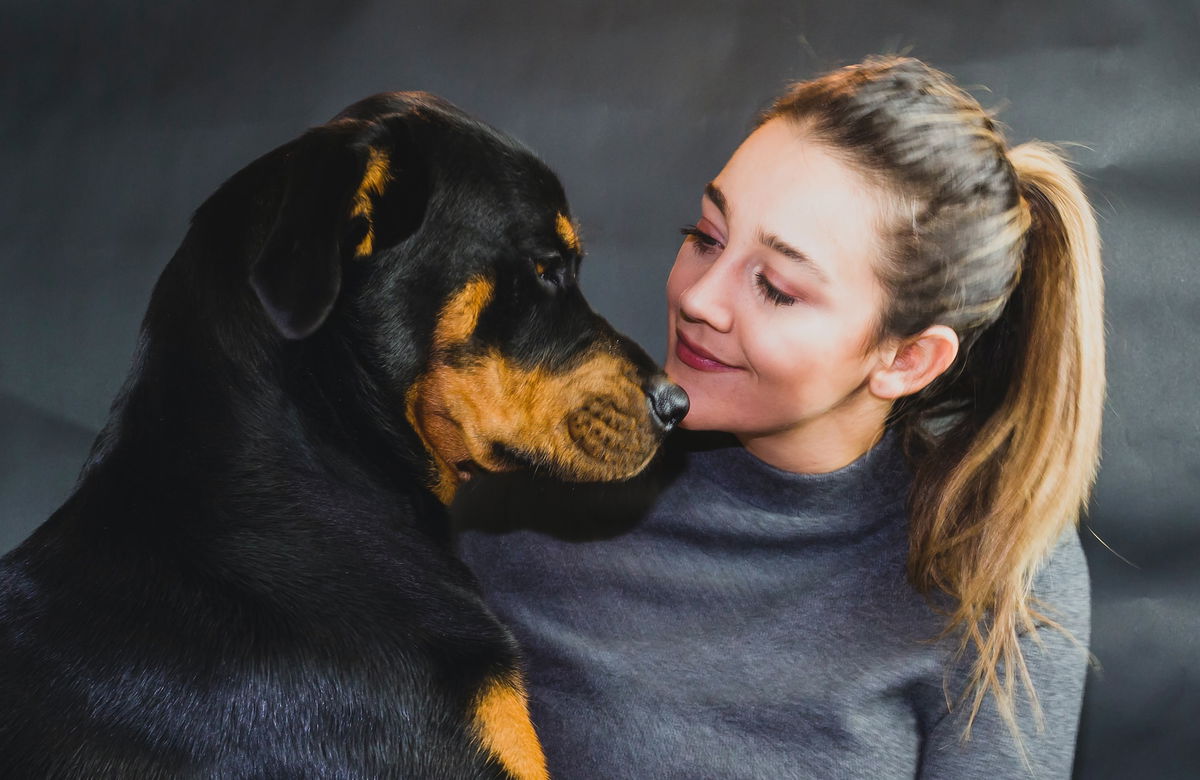
Rottweilers can be very protective and suspicious of strangers which makes them decent guard dogs for homes and property.
However, it’s important to note that untrained Rotties can be dominant and aggressive (even towards children).
These dogs are a superb choice for first-time owners who need an adventurous canine, but make sure to bring them up with the correct training.
Early socialization will adjust the disposition of these lively dogs and make them receptive to other pets within your household.
Rottweiler Intelligence
Rottweilers were originally bred for their working roles in cattle fields which required quick thinking actions, high concentration, and correct decision-making.

The selective breeding of Rottweilers made them highly intelligent dogs adapted for performing various roles including protecting livestock and service roles.
In the book ‘The Intelligence of Dogs‘ written by renowned canine psychologist Prof. Stanley Corren, Rottweilers were ranked position 9 out of 138 breeds tested for canine intelligence.
Rottweiler Health and Lifespan
Rottweilers Average lifespan
On average, most Rottweilers can live a rewarding life for 9 to 10 years although some individuals may deviate from this range.
The longest-living Rottweiler on record is Bort from Holliston, Massachusetts who lived for 13 remarkable years.
Female Rotties, just like other big dogs, can live for an extra 2 more years than their male counterparts.
Common health issues and genetic disorders
Rottweilers are generally healthy dogs but they are prone to some common health problems that you need to be aware of.
Some of the major issues affecting this dog breed include:
- Hip dysplasia
- Elbow dysplasia
- Osteosarcoma
- Bloat
- Lymphoma
- Sub valvular Aortic Stenosis
Preventative measures for good health
You can maximize the life expectancy period for Rottweilers by incorporating strategies for good canine health.
The following are some of the things you can do to keep your Rottweiler in good health:
- It’s important to feed your dog a balanced diet with a nice touch of all important nutrients and minerals. You may have to consult a vet nutritionist for tailored advice on the type of foods to give your pup.
- In addition to providing a high-quality canine diet, subjecting your Rottie to consistent physical and mental activities can make them satisfied and balance their health.
- Elderly Rottweilers are prone to obesity, so you should always maintain a healthy weight for your dog to prevent weight-related issues.
- To be on the safer side, taking your dog to regular physical exams at the vet is crucial in the early diagnosis and treatment of chronic conditions.
- Make sure your Rottweiler receives all the core vaccines and recommended booster shots to strengthen their immunity against communicable diseases.
Rottweiler and Allergies
Rottweilers have a luscious double coat that sheds throughout the year, and excessive hair fall is witnessed during seasonal changes.
This means allergic individuals may experience mild negative reactions from pet hair, and other pet allergens like urine and saliva.
You can reduce the chances of hypersensitivities due to pet allergens by regularly grooming your dog and keeping the house clean from their excretions.
Rottweiler Grooming Needs
Coat Maintenance
Grooming your Rottweiler on a regular basis will not only help them look sharp, but it’s also hygienic for their well-being.
The short coat on Rottweilers requires weekly glide using a slicker brush followed by a smooth wipe using a damp cloth.

These lovely canines can be bathed every two or eight weeks depending on their situation and activity level. Make sure to use canine-specific shampoo when taking your Rottie to the shower.
Avoid overbathing your dog since too much water can strip off the natural oils on the dog’s coat which improves the skin health and coat condition.
Ear cleaning
Your vet may recommend an approved ear-cleaning solution that can be used with a soft cotton ball to wipe down the internal part of the ear.
Nail trimming
Monitor your Rottweiler nails since they tend to grow faster and trim them to keep an appropriate length for health and comfort.
Dental Care
Last but not least, brushing your Rottweiler’’s teeth with a soft toothbrush and canine toothpaste is essential in improving oral health and preventing bad breath (halitosis).
You can also provide your canine friend with a few dental chews to clear any plaque and tartar buildup on the teeth.
Rottweiler Exercise and Activity Levels
Daily activity needs
Rottweilers need regular exercise to keep them physically and mentally satisfied. Most adult Rotties can do well with 45 to 60 minutes of daily exercise broken down into various sessions.
The daily exercise needs and time can vary depending on the individual dog’s age, needs, and activity levels.
Failure to provide your Rottweiler with enough exercise can cause them to add extra weight and tend to obesity which opens up possibilities of other chronic conditions.
Suitable activities and games for Rottweilers
The following are some of the recommended physical activities and mental games you can offer your Rottweiler to keep them engaged:
- Walking
- Running
- Hiking
- Puzzle games
- Playing fetch
- Agility training
- Obedience training
- Obstacle courses
- Tug of war
- Swimming
Importance of mental stimulation
Exercising your dog’s brainpower helps them alleviate boredom and prevents the build-up of emotional distress and anxiety.
Mentally stimulating games also have the potency of strengthening the problem-solving skills of Rottweilers.
Playing brain games with your loyal Rottie can help strengthen your bond and heighten your relationship to greater heights.
Rottweiler Training and Socialization
You should socialize your Rottweiler puppy as soon as you bring them home to make sure they are attuned to their new living condition.
You can do this by exposing the young Rottie to different people, pets, and settings, but make sure your puppy is fully vaccinated before taking them out.
You can enroll your puppy in a nearby puppy class to make them meet other vaccinated dogs and give them opportunities to play and interact with others.
Keep in mind that Rottweilers are active and energetic dogs who need positive outlets to channel their extra strength.
As such, you need to ensure that your lovely pup receives consistent positive reinforced training to make them responsible adults.
Rottweiler Living Conditions
Being medium to large active dogs, Rottweilers can thrive in an environment that provides a fenced yard for outdoor interactions.

These agile dogs are highly adaptable, meaning they can keep up in an apartment block as long as you provide them with daily opportunities to play.
Rottweiler Diet and Nutrition
Rottweilers are predisposed to some health conditions that arise from a habit of eating too much and growing extremely big.
You therefore need to watch your Rottie’s diet to ensure they don’t ingest too much food for their age and conditions.
Rottweilers can do well with high-quality canine-specific food formulated with lots of animal proteins and minimal carbohydrates.
Rottweiler Pregnancy and litter size
The gestation period of expectant Rottweilers lasts for an average of 63 days. You can expect your upcoming Rottie mummy to deliver between 6 to 12 puppies in one litter.
The litter size can vary in many cases depending on the health of the mother, age, genetics, environment, and other individual circumstances.
A good example is Corporal Mark Marshall’s Rottweiler known as Roxy, who gave birth to 16 healthy puppies in Preston, Lancashire.
Conclusion
Rottweilers stand confident with a powerful stocky body, ready to protect their human family from potential threats.
These agile canines need consistent training and socialization to transform them into lovely household companions with no inherent threats to other pets and children.
Make sure to monitor your Rottweiler’s diet since too much food intake can cause them to add extra weight and may also cause certain orthopedic issues.
Laura is the founder of Furs'n'Paws. She is a also a pet writer and expert with more than 20 years of experience of working with dogs and cats. She developed a very strong love for animals at a young age. Her passion led her to establish a thriving pet sitting and dog walking business in Dubai. As an expert in pet training, behavior, and nutrition, Laura is committed to helping pet owners and pet lovers by offering high-quality information on a wide range of topics.



No responses yet